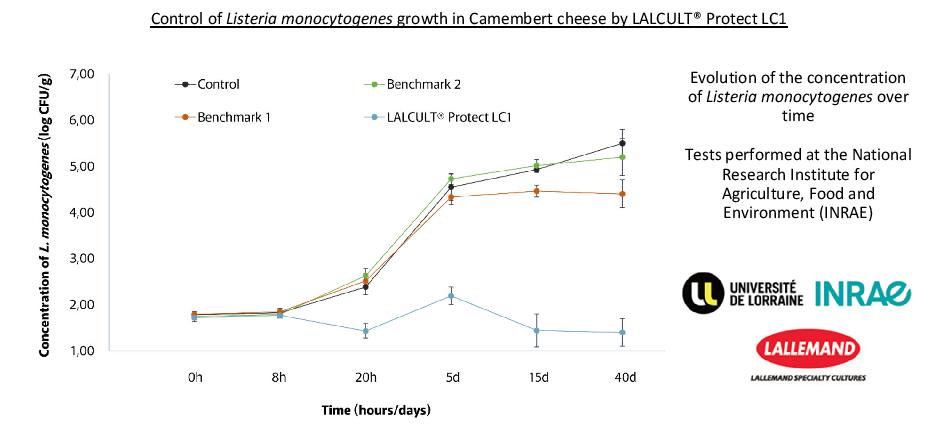Lallemand Speciality Cultures develops a patented solution to control listeria in cheese


Lalcult Protect LC1, a bioprotective culture composed of an exclusive Carnobacterium maltaromaticum strain patented by University of Lorraine.
Image: Lallemand Specialty Cultures
To answer the rising demand for a natural and safe solution to cheese contamination, Lallemand Specialty Cultures (LSC) is now offering the Lalcult Protect LC1, a bioprotective culture composed of an exclusive Carnobacterium maltaromaticum strain patented by University of Lorraine.
The contamination of cheeses by Listeria monocytogenes represents a major concern for the dairy industry as it can generate tremendous impacts from production loses to consumer food poisoning.
Listeria monocytogenes is a psychrotolerant and halotolerant bacteria. As such, it can grow at low temperatures and has the ability to persist in food‐processing areas and equipment.
Cheeses made with unpasteurised or raw milk are estimated to be 50 to 160 times more likely to cause Listeria infection compared to those made with pasteurised milk [source: Centers for Disease Control and Prevention, CDC]. Although pasteurisation of milk kills Listeria monocytogenes, products made from pasteurised milk can still be contaminated by cross‐contamination from the production process or the environment.
Tests carried out at the French National Research Institute for Agriculture, Food and the Environment (INRAE) have confirmed the bioprotective effect of Lalcult Protect LC1 through significant limitation of the growth of Listeria monocytogenes concentration on different cheese technologies.

Lalcult Protect LC1 is a bioprotective solution, which through its activity and ease of use has a large range of applications (all cheese technologies and plant‐based analogs). With its key features, Lalcult Protect LC1 will be a complementary tool for cheese producers in the control of Listeria monocytogenes contamination.
Related content
Source: foodanddrinktechnology.com

